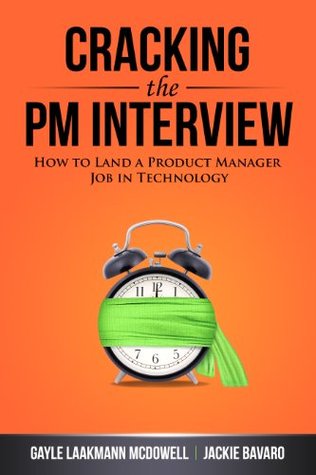More on this book
Community
Kindle Notes & Highlights
Analysis.
Industry Expertise.
Helpfulness.
chat with the sales team.
Another tip for more senior PMs: Figure out your own framework and principles for how you make decisions, and communicate that as often as you can.
seeing how new features and changes to the UX (user experience) would affect customer engagement metrics and ultimately revenue.
PM is an expert in their customer. That’s what sets them apart from the developers and testers.
If you’re interviewing to be a PM, it’s good to look at every problem starting with “Who is the customer?” and “What is success?”
I’ll be at a stoplight in a traffic intersection and will think “How can I make this better? Who am I making this better for?” These problems show up all the time, so you can train yourself to think this way.
A good PM doesn’t only create delightful experiences but knows how to measure success and define success. User-focused, metrics-supported decisions are always the best.
all great PMs are goal oriented.
They’re able to get things done, focus, prioritize.
I spent my first five years in private equity and venture capital investing, developing a skillset that in retrospect was very useful in my product management career: evaluating products and teams, figuring out which ones to invest time and resources in, and calculating return on investment.
Communication is an important PM skill, and your resume is one clear way to demonstrate that.
A PM who can’t express her skills and accomplishments in a clear, concise, and
effective way is a bit worrisome. Much more so than in other roles, you’ll be judged for ...
This highlight has been truncated due to consecutive passage length restrictions.
A resume should be optimized for that 15-second skim.
A long resume is like that. It takes all your best content and then mixes in less important information, leaving the resume reader with a worse overall impression of you.
It’s best to stick to just the highlights.
A good rule of thumb is to limit your resume to one page if you have less than 10 years of experience.
Before you say you can’t possibly fit everything you’ve done on one page, you’re right; you can’t. However, you can fit the most important things on one page.
A resume that just barely goes onto a second page suggests a poor ability to prioritize.
half of your bullets should be just one line,
They don’t make it clear if you actually had an impact. Moreover, your responsibilities are often pretty obvious. We know, broadly speaking, what a product manager or a software developer would do at a company.
Focus on the impact itself; the “what” more so than the “how” (although both are important).
Your responsibilities should generally be clear from your specific accomplishments and from your job title.
A resume is itself a product. It makes a statement about your communication skills, design skills, and your ability to put yourself in the “user’s shoes.”
Avoid weak phrases such as “worked with” and “helped with.”
You might want to include a skills section on your resume, particularly if you have programming skills or experience with design software. Skip obvious skills, such as Microsoft Word. Listing this as a skill communicates only that you know how to open a file, edit it, and save it. Everyone knows how to do that.
Ideally, your resume should describe what the award is for and how selective it is. The award above, for example, might be listed as: John R. Robertson Memorial Prize (2013): Placed 1st out of 75 students in business plan competition. Entered business plan for low-cost solar heated pools.
Projects: Yes Projects are incredibly important. In fact, projects are probably the second most important thing, after work experience.
If you have any side projects, list them on your resume. Describe what the project is that you built and what metrics of success you have.
Richard could make his resume more accomplishment-oriented. He should take each job and ask himself, “What are my five biggest accomplishments?” These should form the bullets of his resume.
tense. Until you’ve shown an impact, it’s not really that meaningful.
This becomes particularly important if you don’t have the “ideal” background.
200 - 250 words.
An ideal PM is passionate about technology and about the industry. This passion should be reflected in the cover letter. Tell the reader why this job excites you.
your cover letter is a way to connect your background with the “perfect” PM fit.
role. One of my proudest accomplishments though was finding a way to reposition our product to capture the enterprise market. This now represents 15% of revenue.


